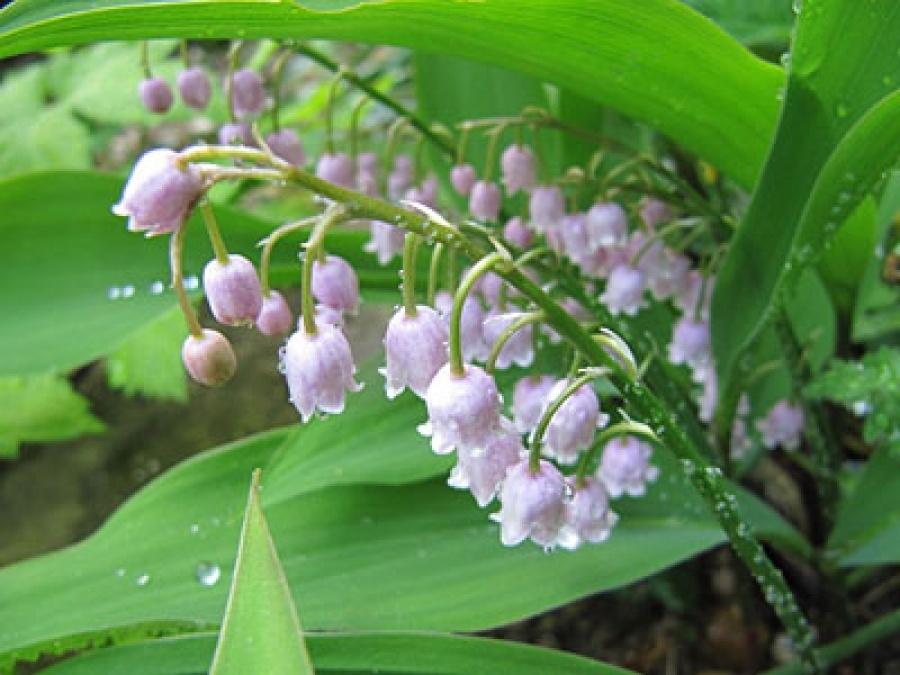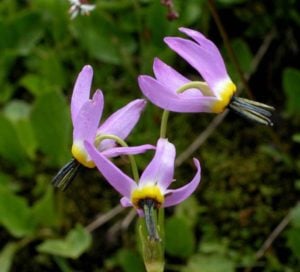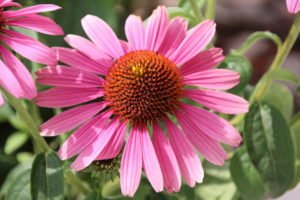Delicate bell-shaped lily-of-the-valley flowers adorn shady lawns and flower beds and fascinate with a wonderful delicate aroma. Do you want to settle a lily of the valley? Now I’ll tell you how to do it! Believe me, there is nothing complicated in planting and caring for the lily of the valley, you will soon see for yourself. We will talk about landing in the open ground.
Landing Lily of the valley
The ideal time for planting lily of the valley is autumn, although you can plant it in the spring. Choose a place in the shade or partial shade. The trainee’s opinion: the easiest way is vegetative propagation by dividing the rhizomes, so soon the flowers are obtained, but the seeds also multiply well. In spring, sow in April-May, in autumn-September. The exact date of the autumn transplant of rhizome segments is difficult to specify, in different climatic zones it ranges from 1-5 weeks, so focus on the color of the leaves of the plant. As soon as they start to turn yellow, you can get to work.
Soil
It will grow and bloom on any soil, except waterlogged and saline. Preference is given to light loams, with low and medium acidity, with good air and water permeability. The depth of embedding of rhizomes in the soil is 1.5-3 cm (0.6-1.2 in), do not thicken the planting, otherwise the lilies of the valley may suffer from gray rot. After planting, pour more water and remember: lilies of the valley do not tolerate over-drying (plants will not die, but they will not bloom, or the flowers will be small and rare), they need constant humidity.
Care
Caring for lily of the valley is simple. After rooting (25-30 days), the plant can be fed with organic fertilizers. Mineral fertilizers are needed only a year after planting. To be honest, I have lilies of the valley without any fertilizing grow well, bloom and multiply! I try not to flood my land with chemicals unnecessarily. Maintain constant humidity (but not dampness!) on a bed of lily-of-the-valley. After watering, pull out the weeds by hand, usually there are few of them.
Reproduction
Lilies of the valley produce a root growth of 15-25 cm (5.9-9.8 in) per year, so they are considered invasive invading plants. Propagated by self-seeding, from ripe berries. Creating favorable conditions for lilies of the valley, very soon these beauties will get to the clearing, seeking to capture new territories. From personal observations: Thickets of lily of the valley need to be thinned 1 time in 2-3 years, otherwise they thicken and almost stop flowering, on one peduncle instead of 12-14 flowers can be 2-3.
Important! All parts of the plant are poisonous, so you need to work with the lily of the valley in gloves. If there are small children, it is better not to leave the lily of the valley berries, their bright color attracts children like a magnet! Once I took the berries out of my youngest daughter’s mouth, so good that she didn’t have time to eat them. I will not exaggerate, so I will say that if you are not going to eat the berries of the lily of the valley by handfuls or cook the tops of the salad, then there will be no great harm
Varieties
All varieties of lily of the valley will not be considered, we will pay attention only to the popular ones.
Convallária Albostriata is a wonderful decorative striped foliage that adorns shady flower beds after flowering.

Convallária Flore Plena is famous for its abundant flowering, forming 10-12 double flowers.

Convallária Rosea fascinates with the original and extremely delicate pink color of the flowers.







